Smart Grain Storage: IoT-Enabled High-Quality Steel Warehouses by Lida Group Feature Real-Time Structural Health Monitoring
2025-Aug-15 17:40:43
By Admin
1. Introduction
Grain storage is a cornerstone of global food security, ensuring a stable supply of staple crops such as wheat, rice, corn, and barley between harvests. However, traditional grain storage facilities face significant challenges, including spoilage due to moisture and pests, structural degradation over time, and inefficiencies in monitoring and management. These issues not only result in substantial grain loss—estimated at 10–15% globally each year—but also threaten the livelihoods of farmers and the stability of food markets.
In response, Lida Group, a leader in steel structure engineering and smart infrastructure, has developed IoT-enabled high-quality steel warehouses for grain storage that integrate real-time structural health monitoring (SHM). These facilities combine the durability of steel construction with advanced sensor technology and data analytics, revolutionizing how grain is stored, monitored, and protected. This article explores the role of Lida Group’s smart grain warehouses in addressing traditional storage challenges, examining their design, IoT integration, structural health monitoring capabilities, and impact on global food security.
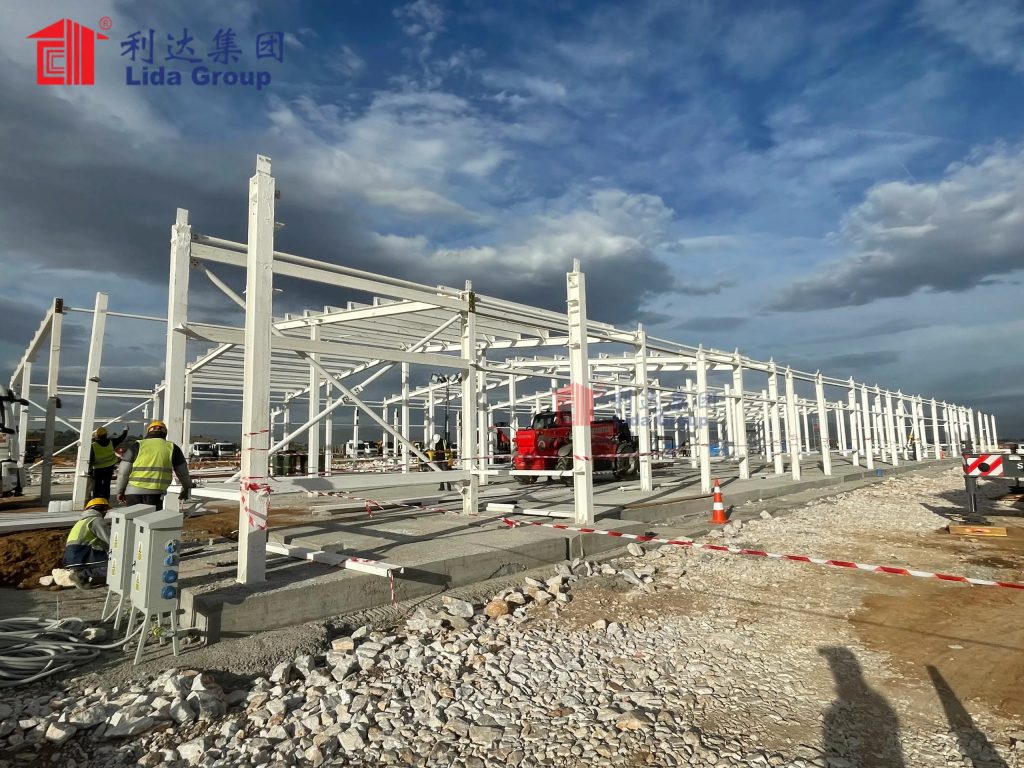
2. The Challenges of Traditional Grain Storage
2.1 Grain Spoilage and Loss
Traditional grain storage facilities, such as concrete silos, wooden barns, or earthen pits, are often ill-equipped to prevent spoilage. Moisture infiltration—from rain, humidity, or condensation—creates ideal conditions for mold growth and insect infestations, which can render grain unfit for consumption or reduce its nutritional value. In hot climates, high temperatures accelerate these processes, leading to rapid spoilage.
Pests, including rodents and insects, are another major threat. They not only consume grain but also contaminate it with feces and pathogens, further increasing loss. Traditional methods of pest control, such as chemical fumigation, are costly, environmentally harmful, and often ineffective in poorly sealed facilities.
2.2 Structural Degradation and Safety Risks
Many traditional grain storage structures suffer from gradual structural degradation. Concrete silos, for example, are prone to cracking due to temperature fluctuations and the weight of stored grain, allowing moisture and pests to enter. Wooden structures are vulnerable to rot, termite damage, and warping, weakening their integrity over time.
These structural issues pose safety risks. A collapsed silo can cause injury to workers, destroy valuable grain stocks, and disrupt the supply chain. Additionally, overloading—common in facilities without accurate monitoring systems—exacerbates structural stress, increasing the risk of failure.
2.3 Inefficient Monitoring and Management
Traditional grain storage relies on manual monitoring, which is time-consuming, labor-intensive, and prone to human error. Farmers or warehouse operators may inspect facilities periodically, checking for signs of spoilage, pest activity, or structural damage. However, this approach often detects problems too late to prevent significant loss.
Inventory management is also inefficient, with inaccurate estimates of grain quantities leading to overstocking or understocking. This can result in financial losses for farmers and food shortages in regions dependent on stored grain.

3. Lida Group’s IoT-Enabled Steel Warehouses: A Smart Solution
3.1 High-Quality Steel Construction for Grain Storage
Lida Group’s smart grain warehouses are built using high-quality steel, chosen for its durability, strength, and resistance to environmental damage. The steel frames are designed to withstand the heavy vertical and lateral loads of stored grain, withstanding pressures of up to 100 kPa (kilopascals) in the lower sections of the warehouse. The use of corrosion-resistant steel, treated with zinc coatings or epoxy paints, ensures the structure remains intact even in humid or rainy climates, preventing rust and degradation.
The warehouses feature airtight seals and insulated panels, minimizing moisture infiltration and temperature fluctuations. This controlled environment reduces the risk of mold growth and pest infestations, preserving grain quality for longer periods. The steel construction also allows for large, clear-span designs, maximizing storage capacity and facilitating efficient grain handling with machinery such as conveyors and elevators.
3.2 Integration of IoT Technology
The defining feature of Lida Group’s smart grain warehouses is the integration of Internet of Things (IoT) technology, which enables real-time monitoring and data-driven management. The IoT system consists of a network of sensors, connectivity devices, and a central data platform, working together to collect, transmit, and analyze data on grain conditions and structural health.
Sensors are strategically placed throughout the warehouse, including:
- Moisture sensors: Embedded in the grain bulk to measure moisture content, alerting operators to potential spoilage risks.
- Temperature sensors: Monitoring ambient and grain temperatures to detect heat buildup, which indicates mold growth or insect activity.
- Gas sensors: Measuring levels of carbon dioxide (CO₂) and oxygen (O₂), as increased CO₂ levels signal spoilage.
- Pest sensors: Using ultrasonic or infrared technology to detect rodent or insect activity.
- Load sensors: Installed in the foundation and support structures to monitor grain weight and prevent overloading.
These sensors transmit data wirelessly to a central cloud-based platform, accessible via computer or mobile device. This allows operators to monitor conditions in real time, from anywhere in the world.
3.3 Real-Time Structural Health Monitoring (SHM) System
A critical component of Lida Group’s IoT integration is the real-time structural health monitoring system. This system uses a network of sensors to track the integrity of the steel warehouse, detecting early signs of stress, deformation, or damage.
- Strain gauges: Attached to steel beams and columns to measure deformation under load, ensuring they remain within safe limits.
- Vibration sensors: Monitoring for unusual vibrations, which may indicate loose connections or structural fatigue.
- Crack sensors: Detecting micro-cracks in welds or steel components, which could expand over time.
- Weather sensors: Measuring wind speed, rainfall, and temperature, providing data to assess environmental stress on the structure.
The SHM system analyzes this data using algorithms to identify patterns and predict potential failures. If a parameter exceeds a predefined threshold—such as excessive strain on a beam or a sudden temperature spike—the system sends immediate alerts to operators, enabling proactive maintenance.
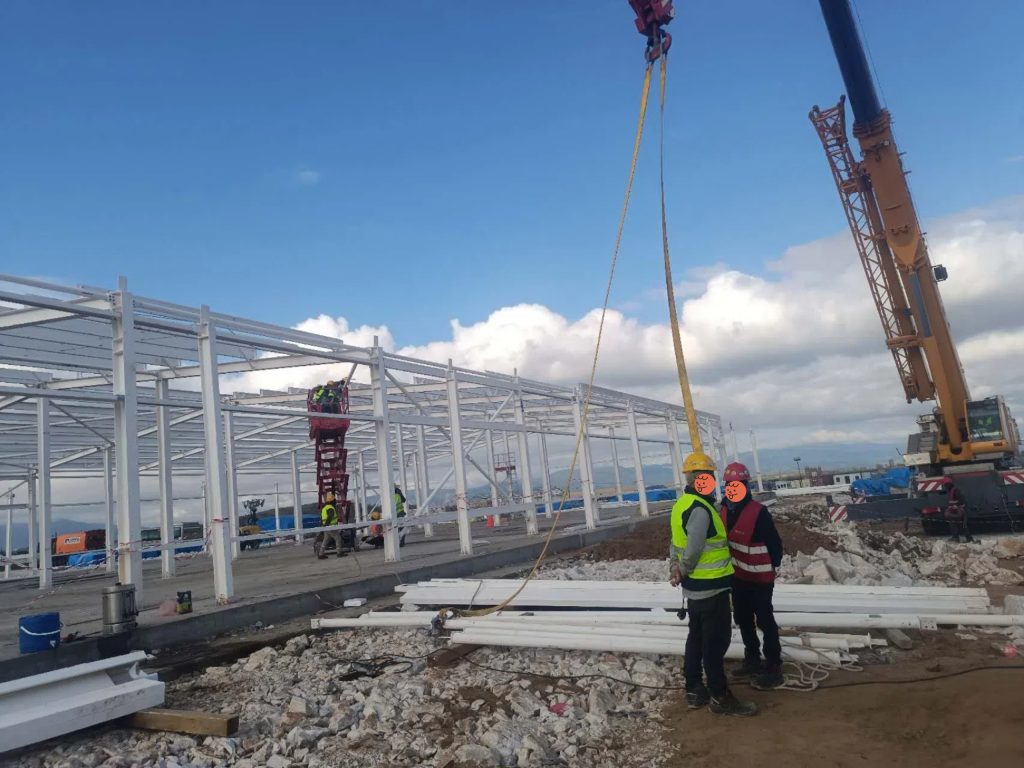
4. Features of Lida Group’s Smart Grain Warehouses
4.1 Climate Control and Grain Preservation
Lida Group’s smart warehouses are equipped with automated climate control systems, integrated with the IoT network to maintain optimal conditions for grain storage. Based on data from temperature and moisture sensors, the system adjusts ventilation, heating, or cooling to keep grain at ideal conditions—typically 12–14% moisture content and 15–20°C temperature for most crops.
Ventilation systems circulate air through the grain bulk, reducing moisture and preventing heat buildup. In humid environments, dehumidifiers remove excess moisture from the air. In colder climates, heating elements prevent condensation, which can lead to mold growth. These automated systems reduce energy consumption by operating only when needed, lowering operational costs.
4.2 Pest and Mold Prevention
The IoT-enabled warehouses incorporate proactive pest and mold prevention measures. When pest sensors detect activity, the system can trigger targeted responses, such as activating ultrasonic repellents or releasing pheromone traps—reducing the need for chemical pesticides. Similarly, if moisture or temperature sensors indicate conditions favorable to mold, the ventilation system adjusts to dry the grain, preventing growth.
The airtight steel construction also acts as a physical barrier, preventing pests from entering the warehouse. This integrated approach minimizes grain loss from spoilage and contamination, ensuring higher quality and safety.
4.3 Automated Inventory Management
IoT sensors enable accurate, real-time inventory management. Load sensors measure the weight of stored grain, providing precise data on quantities. This information is displayed on the central platform, allowing operators to track stock levels, predict when additional storage will be needed, and plan for sales or distribution.
The system can also generate reports on grain quality, such as moisture content and temperature trends, helping farmers and traders make informed decisions about pricing and timing of sales. This reduces waste from overstocking and ensures that grain is sold or used before quality degrades.
4.4 Remote Monitoring and Control
One of the key benefits of Lida Group’s smart warehouses is remote monitoring and control. Operators can access the central platform via a smartphone app or web interface, viewing real-time data on grain conditions, structural health, and inventory levels. They can adjust climate control settings, receive alerts, and even operate machinery such as conveyors remotely.
This feature is particularly valuable for large-scale operations or farmers managing multiple storage facilities, as it reduces the need for on-site visits and enables quick responses to issues. For example, a farmer can check grain conditions from their home and adjust ventilation settings if moisture levels rise, preventing spoilage without traveling to the warehouse.
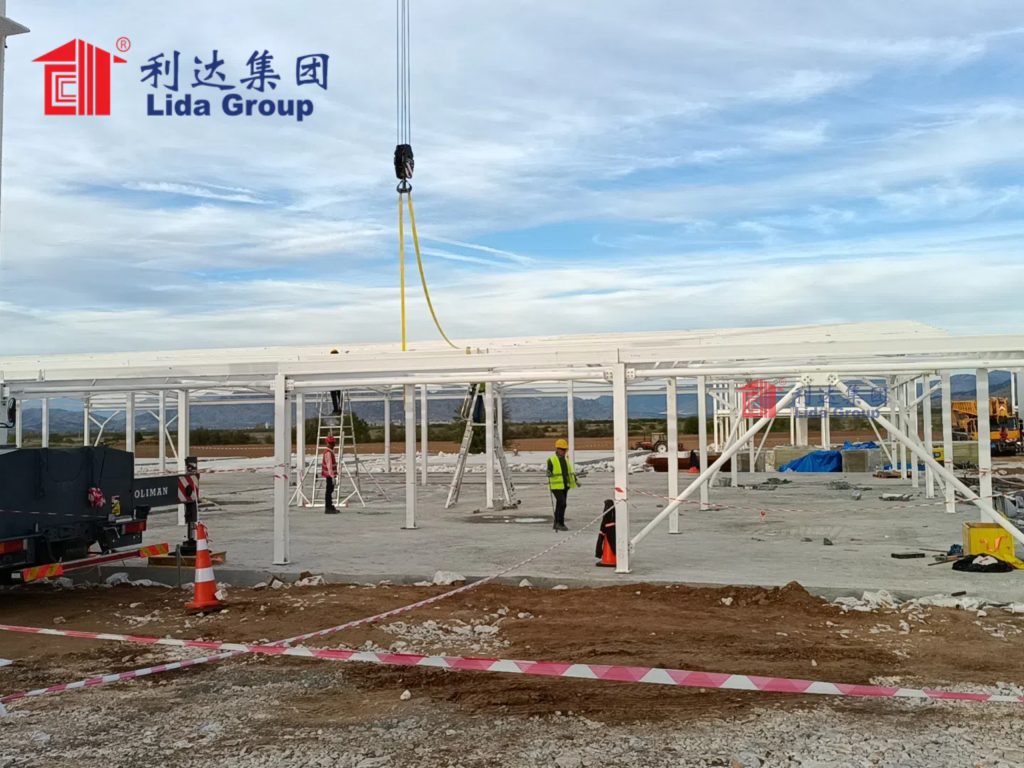
5. Benefits of Lida Group’s Smart Grain Warehouses
5.1 Reduced Grain Loss and Improved Quality
The most significant benefit of Lida Group’s smart warehouses is the reduction in grain loss. By maintaining optimal storage conditions and enabling early detection of spoilage or pest activity, the IoT system reduces loss from 10–15% to less than 2% in most cases. This translates to substantial economic savings for farmers and ensures a more reliable food supply.
Improved grain quality is another key advantage. By preventing mold growth and pest contamination, the warehouses preserve the nutritional value and marketability of grain. This is particularly important for export markets, where quality standards are strict, as higher-quality grain commands better prices.
5.2 Enhanced Structural Safety and Longevity
The real-time structural health monitoring system ensures the warehouse remains safe and durable. By detecting early signs of stress or damage, operators can perform maintenance before failures occur, reducing the risk of collapse and extending the lifespan of the structure. Lida Group’s steel warehouses, with proper maintenance, are designed to last 50+ years—significantly longer than traditional concrete or wooden facilities.
This longevity represents a sound investment for farmers and agricultural businesses, reducing the need for frequent reconstruction and lowering long-term costs.
5.3 Increased Operational Efficiency
IoT integration streamlines warehouse operations, reducing labor costs and improving efficiency. Automated monitoring eliminates the need for manual inspections, freeing up workers to focus on other tasks such as grain handling or sales. Remote control capabilities allow for quick adjustments to climate or inventory, minimizing downtime and ensuring smooth operations.
Accurate inventory management also reduces waste and improves supply chain efficiency. Traders and food processors can plan purchases based on real-time stock data, reducing delays and ensuring a steady flow of grain to markets.
5.4 Data-Driven Decision Making
The wealth of data collected by the IoT system enables informed decision making. Farmers can analyze trends in grain quality and storage conditions to optimize their harvesting and drying processes. For example, if data shows that grain harvested in late seasons retains more moisture, they can invest in better drying equipment to prevent spoilage.
Agricultural businesses can use inventory data to forecast demand and adjust production levels, reducing the risk of overproduction or shortages. Governments and aid organizations can also use data from smart warehouses to monitor national grain stocks, improving food security planning and disaster response.
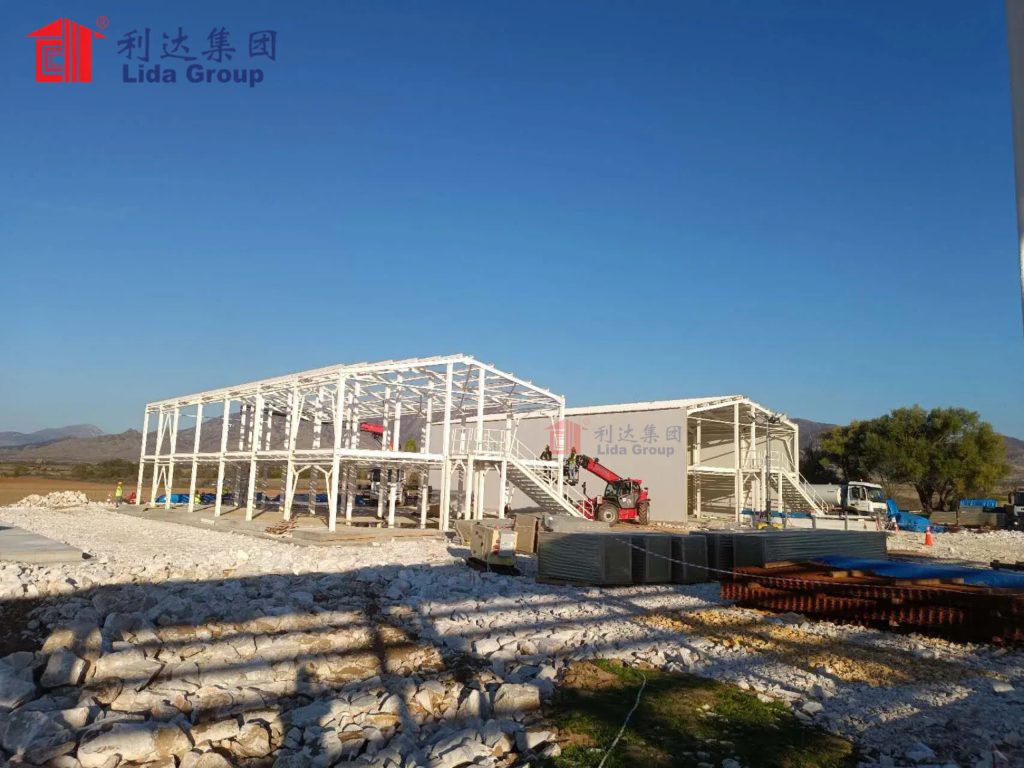
6. Case Studies: Successful Implementation of Smart Grain Warehouses
6.1 Large-Scale Agricultural Cooperative
A regional agricultural cooperative in a major grain-producing area needed to reduce post-harvest loss and improve storage efficiency. The cooperative installed five 10,000-ton Lida Group smart grain warehouses, equipped with IoT monitoring and structural health systems.
Within one year, the cooperative reported a 90% reduction in grain loss, from 12% to less than 1.5%. The real-time moisture and temperature monitoring allowed operators to adjust ventilation systems proactively, preventing mold growth during a particularly humid season. The structural health monitoring system detected a minor strain in one warehouse’s support beam, enabling repairs before it became a safety hazard. The cooperative also noted a 30% reduction in labor costs due to automated monitoring, and higher prices for their grain due to improved quality.
6.2 Small-Scale Farmer Collective
A group of small-scale farmers in a developing country struggled with inconsistent grain storage, leading to frequent spoilage and low market prices. With support from a agricultural development program, they invested in a 2,000-ton Lida Group smart warehouse.
The IoT system’s remote monitoring feature was particularly valuable for the farmers, who could check grain conditions using their smartphones. When heavy rains caused a temporary spike in humidity, the system alerted the farmers, who activated the dehumidifier remotely, preventing moisture damage. Over six months, the farmers reduced grain loss by 85% and increased their income by 25% due to higher-quality grain sales. The warehouse’s steel construction also withstood a severe storm, protecting their entire harvest—a first for the community.
6.3 Food Processing Plant
A large food processing plant required reliable storage for raw grain to maintain production consistency. They replaced their aging concrete silos with a 50,000-ton Lida Group smart warehouse, integrated with their production management system.
The automated inventory management feature allowed the plant to track grain quantities in real time, ensuring a steady supply for processing. The climate control system maintained optimal conditions, reducing the need for cleaning and sorting spoiled grain. The structural health monitoring system provided data on load distribution, enabling the plant to maximize storage capacity without overloading the warehouse. As a result, the plant increased production efficiency by 15% and reduced waste by 20%.

7. Future Innovations in Smart Grain Storage
7.1 AI-Powered Predictive Analytics
Lida Group is developing AI-powered predictive analytics for its smart grain warehouses, which will use historical and real-time data to forecast potential issues. For example, machine learning algorithms could predict when moisture levels will rise based on weather forecasts, allowing the system to adjust ventilation proactively. AI could also analyze structural health data to predict the remaining lifespan of components, enabling preventive maintenance scheduling.
7.2 Integration with Renewable Energy
To enhance sustainability, Lida Group is integrating renewable energy sources into its smart warehouses. Solar panels on the warehouse roof can power the IoT sensors, climate control systems, and lighting, reducing reliance on grid electricity. Battery storage systems will store excess energy, ensuring continuous operation during power outages—a critical feature in remote areas.
7.3 Blockchain for Supply Chain Transparency
The company is exploring blockchain technology to improve supply chain transparency. By recording grain quality data, storage conditions, and movement on a blockchain, buyers can verify the origin and quality of grain, increasing trust and enabling fairer pricing. This is particularly valuable for organic or specialty grains, where traceability is essential.
7.4 Robotics for Automated Grain Handling
Lida Group is testing robotics for automated grain handling within the warehouses. Autonomous drones could inspect grain levels and conditions, while robotic arms could assist with loading and unloading. This would further reduce labor costs and improve efficiency, especially in large-scale facilities.
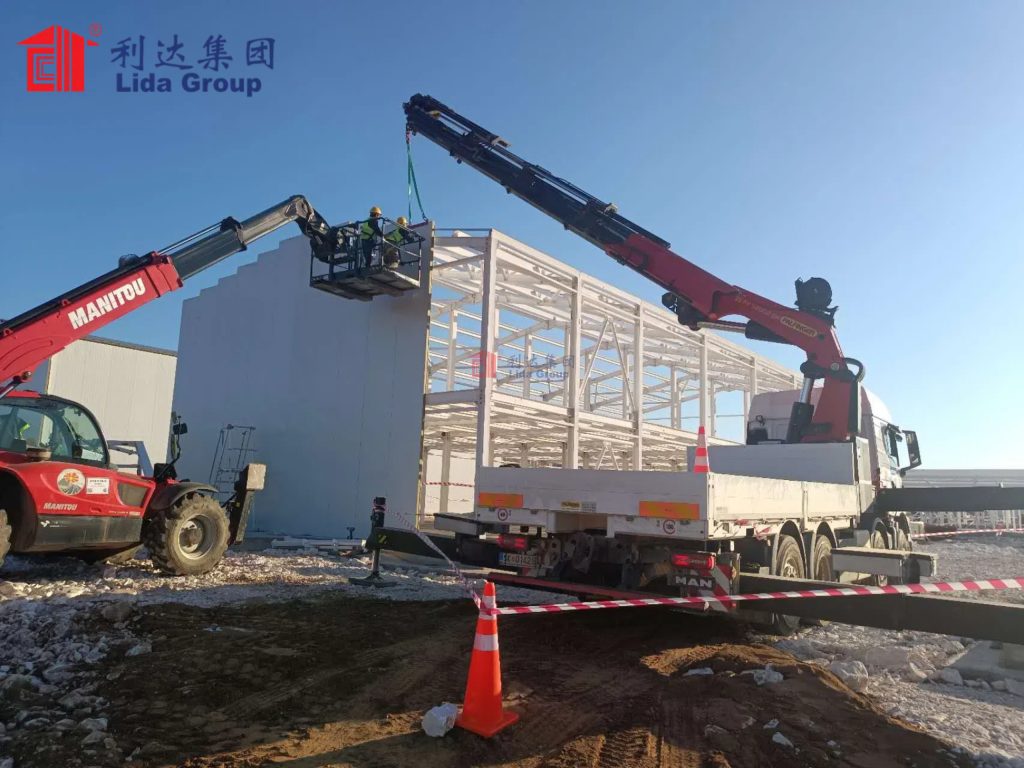
8. Conclusion
Lida Group’s IoT-enabled high-quality steel warehouses represent a transformative solution for grain storage, addressing the longstanding challenges of spoilage, structural degradation, and inefficient management. By combining durable steel construction with advanced IoT technology and real-time structural health monitoring, these facilities ensure safer, more efficient, and more reliable grain storage—ultimately enhancing global food security.
The benefits of these smart warehouses are clear: reduced grain loss, improved quality, enhanced structural safety, increased operational efficiency, and data-driven decision making. Case studies from around the world demonstrate their effectiveness for both large-scale operations and small-scale farmers, proving that smart storage is accessible and beneficial across diverse contexts.
Looking to the future, innovations such as AI predictive analytics, renewable energy integration, blockchain transparency, and robotics will further enhance the capabilities of smart grain storage. These advancements will not only improve efficiency but also contribute to sustainability, ensuring that grain storage meets the needs of a growing global population while minimizing environmental impact.
In a world where food security is increasingly vulnerable to climate change, population growth, and supply chain disruptions, Lida Group’s smart grain warehouses offer a critical solution. They are more than just storage facilities—they are a key component of a resilient, efficient, and sustainable food system, ensuring that the world’s grain resources are protected, preserved, and utilized to their full potential. As adoption grows, these smart warehouses will play a vital role in feeding communities, supporting farmers, and stabilizing global food markets for generations to come.

Related news
-
Rapid Warehouse Expansion: Lida Group Completes 50,000m² High-Quality Steel Facilities Using Modular Frame Building Kits
2025-08-15 17:06:54
-
Coastal Corrosion Defense: Lida Group's Steel Farm Houses Incorporate Salt-Resistant Coatings in All Structure Construction
2025-08-15 15:53:55
-
Zero Welding Defects Guaranteed: Lida Group's Steel Frame Building Process Ensures Premium Quality Warehouse Longevity
2025-08-15 14:43:45
contact us
- Tel: +86-532-88966982
- Whatsapp: +86-13793209022
- E-mail: sales@lidajituan.com


